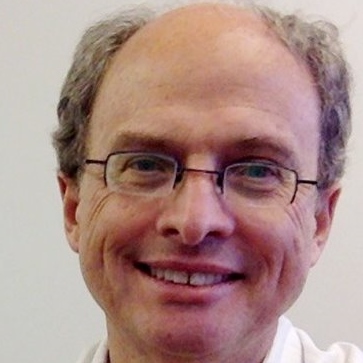click to dowload our latest edition
CLICK HERE TO SUBSCRIBE TO OUR NEWSLETTER


Published
7 years agoon
By
adminNIA MAGOULIANITI-MCGREGOR
Since he was opening for Professor Scott Hazelhurst, all set to talk on a history of the Jewish people from the perspective of DNA sequencing technologies, who could blame the rabbi? Most of us don’t know our genomes from our garden gnomes.
But Hazelhurst, professor of bioinformatics in the School of Electrical and Information Engineering at Wits, and at the Sydney Brenner Institute for Molecular Bioscience, is set to change all that.
Hazelhurst is, as he says, “involved in large-scale sequencing and genotyping of populations to try to understand its diversity”.
Genotyping determines differences in the genetic make-up of an individual by examining their DNA sequence, then comparing it to other sequences.
While his research focuses on the genetic causes of disease, this same data can be used to explore population histories. “This can complement historical and archaeological records or, on occasion, contradict them,” says Hazelhurst.
“DNA is a reflection of who our ancestors were, or more precisely, where our ancestors were. There is no such thing as a Zulu genome or Jewish DNA or Kohen gene. That’s fiction. Although DNA helps us understand population history, DNA doesn’t define who we are.”
We do, however, find that different communities have different genetic characteristics.
Hazelhurst provides a whirlwind history of the world: Seventy thousand years ago modern humans left Africa. Over the next 30 000 to 40 000 years, they spread across the rest of the world. Between 25 000 and 10 000 years ago, the ancestral populations of modern people in the Middle East and a large part of the Mediterranean, settled.
“Around 20 000 years ago they settled in Arabia and about 12 000 years ago in the Levant – a geographical term used to include Cyprus, Syria, Lebanon, Israel, southern Turkey and Jordan. These two populations form the basis of the Jewish people and people of the Middle East.”
Historically, says Hazelhurst, “most Jews have lived outside of the Land of Israel, and in contact with other people across the world who have affected them”. This includes an exile to Babylon, then Egypt and later “there is a significant diaspora across Persian, Greek and Roman rule, so that before the fall of the Second Temple, it moves across the Middle East and the Mediterranean.”
Hazelhurst introduces his audience to “Autosomal DNA” – which is 97 per cent of DNA (one copy from each parent), the Y-chromosome – inherited from father to son, and mitochondrial DNA, inherited maternally, but seen in all genders.
Autosomal DNA data shows, he says, a “remarkable continuity” in Jewish genetic history. “Despite a long separation in different parts of the world, of people in contact with other populations, many Jewish groups including Ashkenazi and Sephardic, are more similar to each other than their host populations.”
There are, of course, links. Y-chromosome data shows most Jews come from areas like the Middle East and Levant greater than 2 000 years ago.
Focusing on the Ashkenazim, Hazelhurst says the first real records dating to the 10th century, show they settled in the Rhineland (now eastern France and western Germany).
“There are tantalising historical clues,” says Hazelhurst, about where they came from. The one that stands the test of mitochondrial DNA evidence, according to him, is the “Italian Hypothesis”.
“While maternal founders of Sephardim were from the Middle East, we see strong evidence of a majority European female founder for Ashkenazim. Roughly 80 per cent of mitochondrial haplotypes (a group of genes) probably come from European origin and probably greater than 2 000 years ago.
“There is a clear social story – which is only a probability.” He says it makes academic sense.
“There was a large Jewish diaspora right across the Mediterranean before the fall of the Second Temple and by halfway through the first century, the Jewish population of Rome was about 50 000 – making it as Jewish as Johannesburg is today.
“The Italian Hypothesis suggests Jewish men on the move – maybe for business purposes – marry local women who convert. After a few generations that process stops and people marry entirely within the faith.”
Autosomal data is consistent with what the mitochondrial results show regarding ancestry.
“Disturbingly, a recent paper suggests that in the 12th or 13th centuries, the population size of the Ashkenazi drops to a few thousand. It’s a record of something catastrophic happening. Many genetic diseases may be traced to this genetic ‘bottleneck’ rather than to recent events,” posits Hazelhurst.
We need more people to be sequenced, he says. “While taking DNA from skeletons that are up to 10 000 years old is controversial, it’s revolutionised our understanding of European history.”
A member of the audience asks: “Does this mean a non-Jewish woman doesn’t have to convert if she’s found to have a Jewish DNA?”
Hazelhurst comes full circle: “No. DNA does not define who we are.”
* Prof Hazelhurst will be speaking at Limmud in August.
